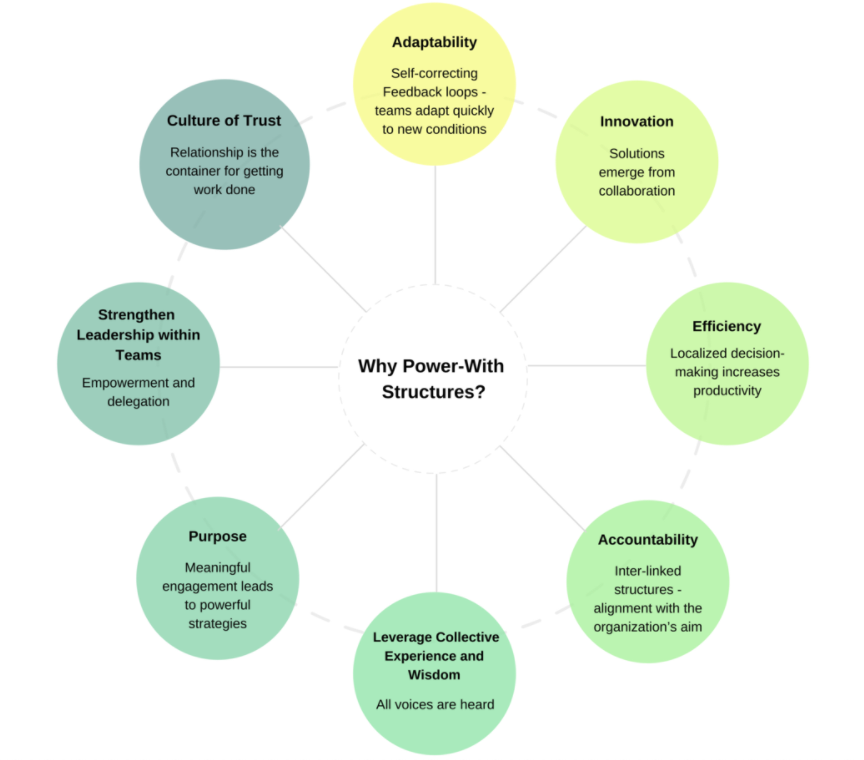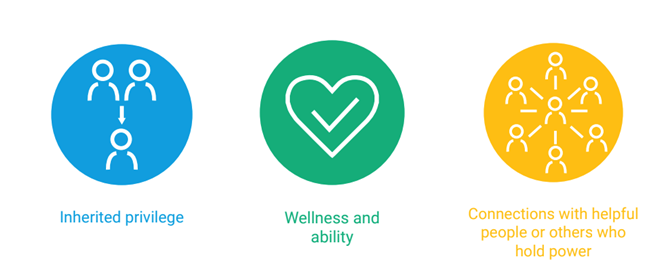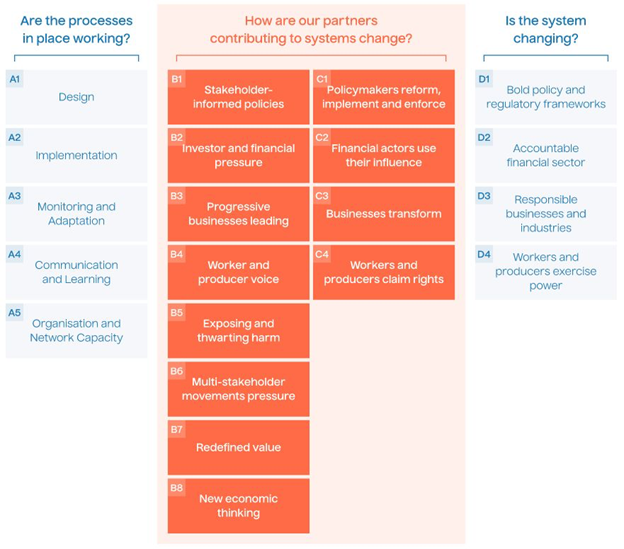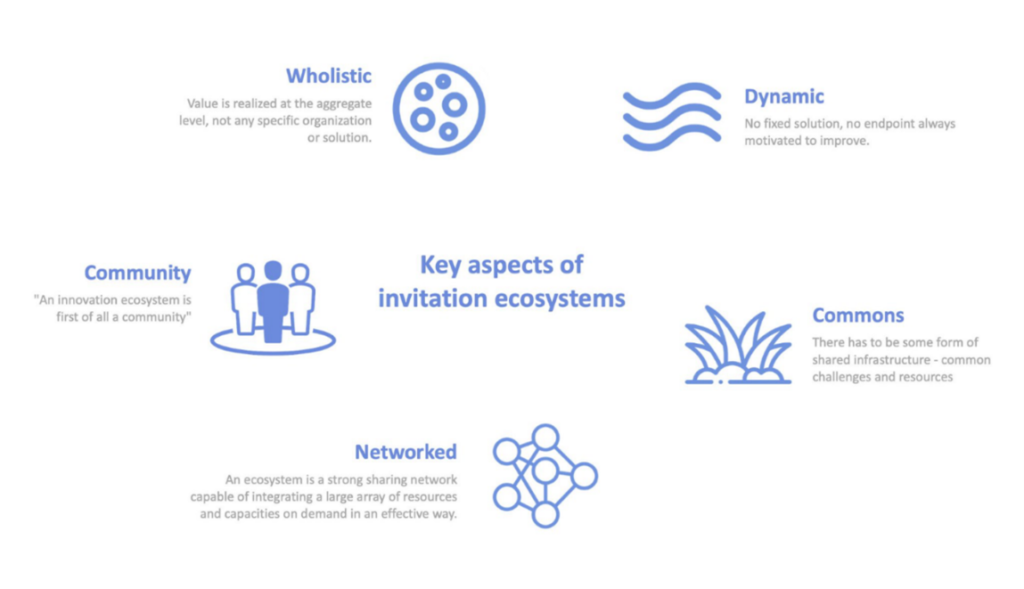June 22, 2021
We continue to be grateful for all the wonderful and inspirational resources being produced by such thoughtful colleagues around the world that can support civil society’s resiliency efforts. Here are some of our recent favorites, from systems design frameworks to insights on behavioral change during times of uncertainty in the nonprofit sector. We hope these resources we’ve curated for our June Resiliency+ Roundup help you reflect on and reshape your personal and organizational resiliency journeys.
Check out the resources, organized by the seven reinforcing factors of organizational resiliency in the PartnersGlobal Resiliency+ Framework.
We have also pulled 5 top resiliency tweets for a quick way to plug into the resiliency conversation. See those below!
5 Top Resiliency Tweets
1. Check out this thread from Toward Belonging for an interview with Fine Acts’ Yana Buhrer on their work surrounding the intersection of social justice and art for global activists everywhere.
2. Decolonizing the language used in peacebuilding, development, and aid is of vital importance. See what words are being used to replace terms like ‘beneficiaries’, in this thread from Martha Awojobi.
3. Speaking of language, the Garfield Foundation recently released a new blog series reflecting on the language and practice of systems change, a valuable aspect of organizational resiliency.
4. Larger Us Network offers practical insights for adaptation amidst unpredictable environments and contexts with 10 key lessons to not only survive but thrive.
5. Phoebe Tickell shares insight on how we might reframe the narrative of “innovation” to embrace more collective and systemic ways of learning and being.
Resiliency Resources by Factor
Legitimacy
Saskia Brechenmacher and Thomas Carothers put together series of essays by leading scholars and activists working in ten countries around the world—from Guatemala to Tunisia and from Kenya to Thailand—to write about their experiences and their responses to various fundamental questions: What are the sources of legitimacy of civil society? How can civil society organizations strengthen their legitimacy to help them weather government attacks and build strong coalitions to advance their causes? And how can international actors ensure that their support reinforces rather than undermines the legitimacy of local civic activism?
Hear from Tosca Bruno-van Vijfeijken and Srilatha Batliwala on this NGO Soul+ Strategy Podcast talking about Politics, Power and Feminist leadership in organizational dynamics.
In Why Ongoing Power Building Matters and How Every Nonprofit Can Do It, Louisa Hackett and Mohan Sikka share practical tips for nonprofits looking to bolster their power building efforts. The authors also charge nonprofits to “counter the boom and bust of national election cycles” with specific calls to action for the nonprofit field from capacity builders to board members, and executive directors.
Engaging The Narrative
Check out this Toda Peace Institute policy brief to learn how activists are using technology to pursue public interests in human rights, democracy and a livable environment. It looks at how cell phone tech has upped the outreach and mobilizing game for campaigns, dives into digital storytelling and fundraising, explores key digital tools for collaboration and training, covers cybersecurity considerations and closes with a broad look at topical creative tech-based nonviolent activist success stories. Though digital tech is no silver bullet for successful campaigns, there are clear uses and recommendations to build power and win with digital technology.
“When we use this sterile language, it limits our ability to speak to ourselves within civil society, as it is hard to inspire and energize people with talk of “sectors” and “stakeholders”. But it may also limit our ability to speak to those in power. It is often stated as fact that we need to speak “the language of government” or “the language of business” if we are to have influence, but what if this is the wrong way of looking at things? What if, rather than trying to fit in with the technocratic lexicons of other sectors, civil society saw part of its role as bringing its own language and concepts to the table and thus expanding the limited boundaries of policy debates?” Visit this Philliteracy blogpost for more on the subject.
In an age of information and confusion, messaging and finding trusted messengers, are vitally important to the success of advocacy campaigns. Hear from, Samantha Wright, Annie Neimand and Max Steinman, as they share eight archetypes and four audience contexts to help organizers identify the right trusted messengers.
Business Acumen
For our creative and entrepreneurial readers: In How the ‘creative-cliff illusion’ limits our ideas, David Robinson shares insights on why the assumption that our best and most creative ideas come to us quickly is not only limiting, but wrong. Robson draws on the cutting-edge research of Brian Lucas, a professor of organisational behavior at Cornell University, to uncover more on the “creative-cliff illusion”.
Whether it be fundraising, asking for volunteers, or having people complete a survey, there’s a new Zoom tool out to help make these tasks easier. Check out this blogpost from The Democracy Labs on getting more out of your Zoom meetings by making it simple for attendees to follow your directions with Give buttons.
Resiliency Ethos
“Recent years have provided ample opportunities to discover just how resilient civil society can be in the face of severe threats. The inherently innovative nature of bottom-up, citizen-led initiatives can be seen in response to unexpected challenges like a global pandemic as well as longer-term negative political trends like populist invocations of national sovereignty to short circuit social and political solidarity across borders.” The Rights Collaborative with partners have mapped some of the ways that civil society is continuing to innovate.
Patterns for Change recently released this interactive guide for nonprofits looking for behavioral guidance during times of change and uncertainty. Explore one or all seven behavior guides which include individual, group, and organizational level prompts and reflections.
The Omidyar Network, in collaboration with the Guild of Future Architects, curated The PORTALS report, inspired by a yearlong process of imagining futures beyond the pandemic. The report centers Omidyar Network’s mission of “reimagining systems to build more inclusive and equitable societies” and includes trends to watch out for in 2021 and beyond.
Situational Awareness
“How can we measure and learn when promoting systems change? It’s a challenge that has inspired Laudes Foundation to develop a rubrics-based methodology to help us, our partners, and the wider field of philanthropy, understand our contribution to change, while learning and adapting to new and unforeseen circumstances.”
The first draft of the ”Systems Innovation Ecosystem Template“ was recently released. This template is designed to help you think through and define the different aspects of developing a systems innovation ecosystem.
Adaptive Capacity
COVID and its accompanying physical distance put pressure on all of us to come up with new, creative tactics to reach decision-makers and to increase the visibility of our campaigns. Without the availability of some of our traditional in-person approaches, many campaigners have had to pivot. Check out Tectonica’s list of online tactics that we hope will inspire you!
“In a changed, post-pandemic environment, employees, customers, and investors have high expectations for the companies they work with. They expect companies to play a more prominent role in tackling systemic issues like climate change and social inequality, and they expect leaders to be effective, authentic, and compassionate. Leaders who want their organizations to meet this moment and succeed long-term need to move away from the status quo and change their approach to how they’ll lead the necessary transformations. The authors present four strategies for success.”
Connectedness
The Design Council recently published “The Systemic Design Framework” to help designers working on major complex challenges that involve people across different disciplines. Here’s what they came up with as the key characteristics of change makers.
Did you miss the Spring 2021 #SolidaritySemester from the Building Movement Project? Catch up on the recordings and learn about:
- mapping your social change role and ecosystems
- practicing centering and co-conspiratorship
- building a vision of co-liberation
View the sessions here.







